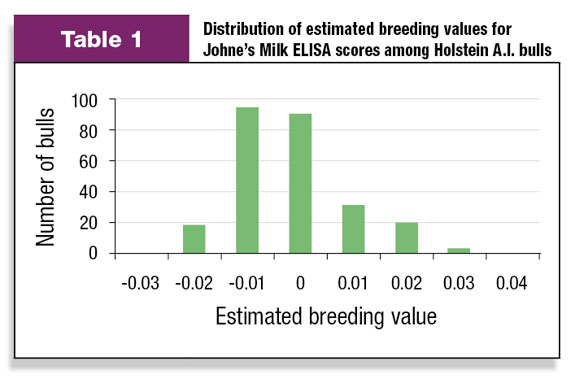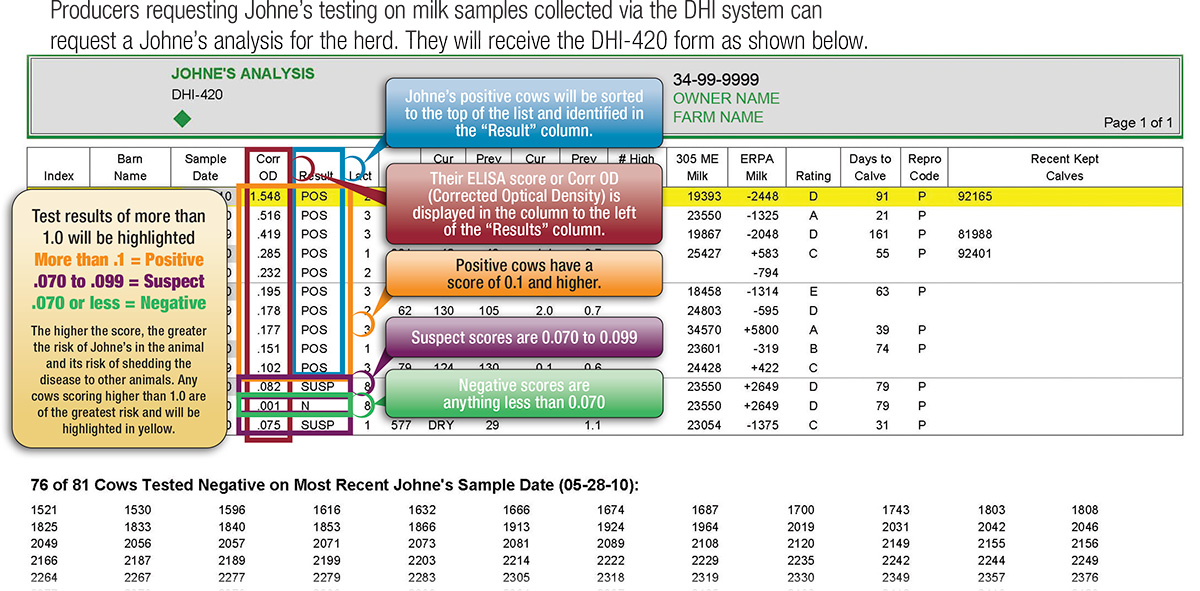Johne’s disease remains a significant threat to the dairy industry worldwide, even though knowledge and tools are available to effectively relegate these bacteria back to their native environment – the soil. In the research laboratory, there are many obstacles to developing solutions for Johne’s. On the farm, however, there appear to be just three: anxiety, prioritization and inaction.
The impetus to overcome these obstacles may very well come from the recent integration of Johne’s testing and management into the Dairy Herd Improvement (DHI) system. Could the type of progress made in dairy cow performance, milk quality and genetics as a result of DHI also be realized in control of Johne’s disease? Many think so, including the USDA and DHI, and efforts over the last five years have focused on enlisting the value of DHI to help overcome challenges frequently associated with Johne’s management.
Anxiety, prioritization, inaction. All three keep producers from addressing Johne’s. All are reminiscent of another time when another newly devised metric offered the dairy industry an opportunity for improvement but with a risk. Remember when somatic cell counts were considered taboo, and producers withheld data from DHI because they could potentially be blacklisted from marketing milk? Now, looking back, after integration into DHI, SCC test data have resulted in reduced anxiety (i.e., we know mastitis occurs industry wide) and prioritization of mastitis (i.e., producers observe significant effects of mastitis even beyond direct infection) an specific actions (i.e., management and genetic selection have reduced the incidence of mastitis).
We’ve come a long way, and there’s no reason that testing data can’t do for Johne’s what SCC reports have done for mastitis. The first building block is now in place; Johne’s test data is being forwarded to dairy records processing centers. The new DHI-420 Johne’s Report from Dairy Records Management Systems (DRMS) is now available to producers requesting Johne’s testing on milk samples collected via the DHI system. ( You can view a sample report at the end of this article. )
In the DRMS DHI-420 Johne’s Report, milk ELISA-positive cows are accumulated at the top of the report along with their current performance, future potential and recently kept calves. Since the list of positive cows is cumulative and translates roughly to prevalence of disease, management should focus on reducing the size of the list. Since cows with high positive ELISA scores are the most infectious animals in the herd, action is encouraged by listing them clearly and providing production, SCC and reproductive data in relation to their Johne’s results. Producers will have more confidence in decision-making, thereby culling more of these critical animals sooner, and benefiting Johne’s control through reduced environmental contamination.
Listing productivity information on ELISA-positive cows in the DHI-420 report also allows producers to track current productivity and future potential if cows are allowed to stay in the herd. Johne’s-infected animals simply do not absorb nutrients as well as their negative herdmates, and over time this will become evident on the report as production suffers with advancing disease.
Johne’s impact is not only on the current generation. Calves of Johne’s-positive cows begin life with a higher probability of infection. To facilitate management of high-risk calves, the DHI-420 report also points out calves that have been kept from test-positive cows. Ultimately, Johne’s disease will be prioritized when the impact of infection is noted and realized, and this report on a regular Johne’s testing program paints it in black and white.
Integrating Johne’s testing into DHI takes the data beyond the individual dairy and assimilates it industry-wide, making it clear that Johne’s is not isolated to a few unfortunate dairies. In fact, the most recent look at prevalence from the NAHMS 2007 Dairy Study suggests 80 percent of U.S. dairies harbor infection. Producers should not be apprehensive that accumulated data may be used to undermine individual dairies. Instead, amassed data, which has served producers well during the evolution of the dairy industry, will help make clear the real impact of the disease so it can be given due diligence.
In preliminary evaluation using 200,000 Johne’s milk ELISA data points, which were assimilated from samples submitted via the DHI system, the USDA’s Animal Improvement Program Laboratory (AIPL) produced some telling statistics. The prevalence of ELISA-positive cows increased from 3.8 percent in 2002 to 7.5 percent in 2008. In addition, daughters of ELISA-positive cows have a prevalence rate 74 percent higher than daughters of test-negative cows.
Clearly, this is a trend that must first be identified and acknowledged, before being effectively reversed. When you consider that ELISA- positive cows produce 1,120 pounds less milk than contemporaries, even slight changes in prevalence have a tremendous impact. A change in prevalence of only one percentage point in either direction translates to a net gain, or loss, of 100 million pounds of milk in the U.S. annually. Hardly trivial figures.

An industry-wide look via DHI doesn’t only reveal the impacts of Johne’s disease, but also delivers some solutions. Johne’s milk ELISA scores are heritable, 5 percent to 10 percent depending on the study. In the dataset in Table 1 , 262 sires were identified with at least 50 daughter records and the distribution of their breeding values for milk ELISA scores were calculated. The range in sire estimated breeding values (0.07) was substantial compared to the mean and standard deviation (0.04 ± 0.18) of milk ELISA scores for cows.
Sure, progress via genetic selection will be challenging, but the awareness and prioritization that accompany this industry-wide approach will enable a reversal of the current direction of Johne’s milk ELISA scores. Still not sure what progress will truly result? Remember our somatic cell count example; it’s interesting to note that the average SCC in DHI herds has decreased from 322,000 to 233,000 in the last eight years. Progress is real and achievable, if you have the information and act on it. Now we do, and we can.
References omitted but are available upon request. Click here to email an editor.
Producers requesting Johne’s testing on milk samples collected via the DHI system can request a Johne’s analysis for the herd. They will receive the DHI-420 form as shown below. (Click image to open in a new window at full size)






